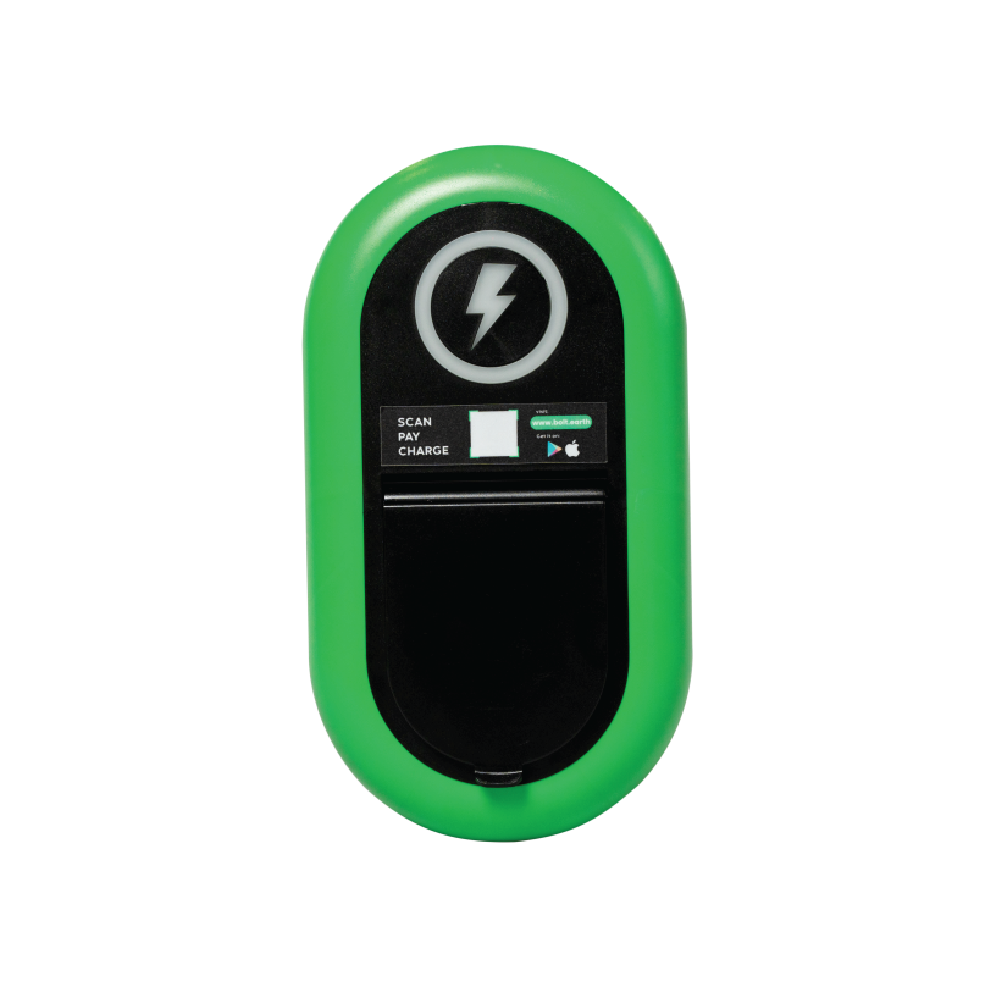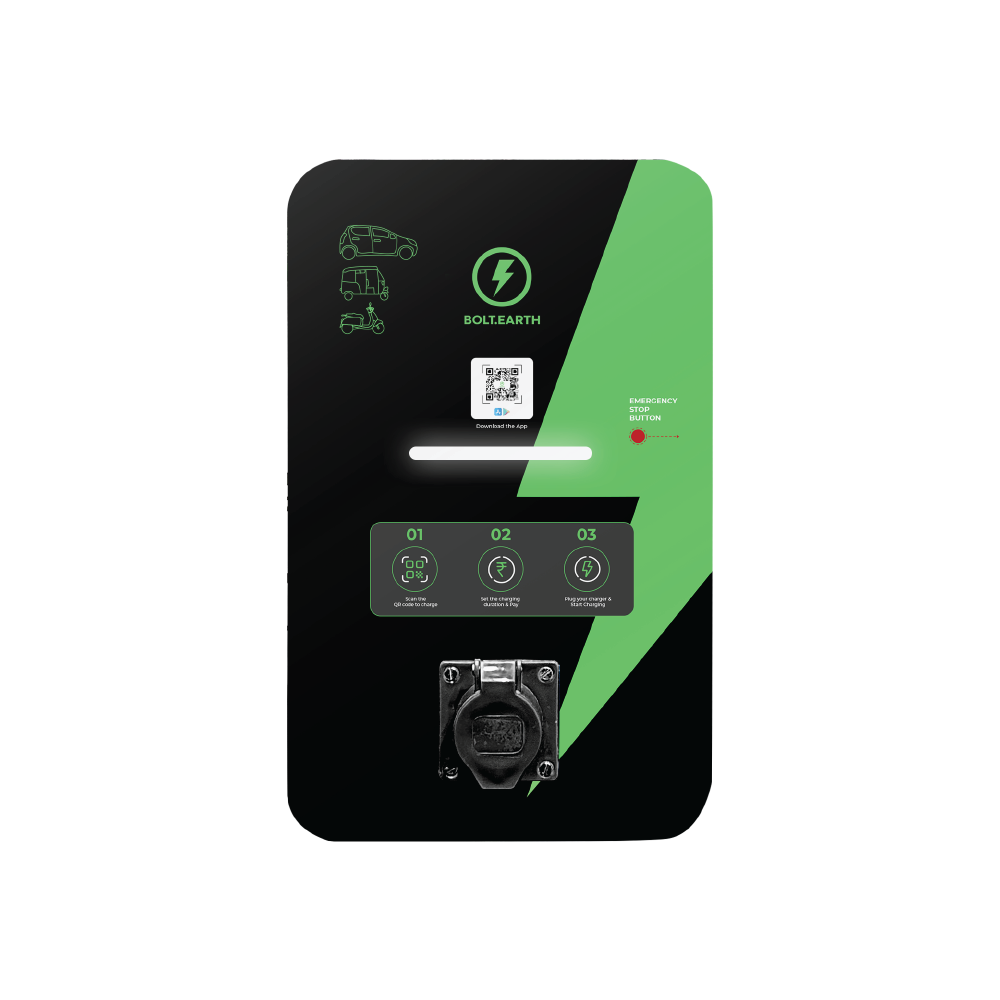How RWAs Can Navigate Government Guidelines for Efficient In-Home EV Charging Installation
Raghav Bharadwaj
Chief Executive Officer
Published on:
08 May, 2023
Updated on:
24 Nov, 2025

In-home EV charging is quickly becoming a go-to for EV drivers across India due to its unmatched convenience. As a result, the country is incentivizing RWAs to install charging stations on their premises, further boosting EV adoption among residents.
However, despite some state governments’ initiatives to streamline the installation process through a single window process, RWAs are still grappling with several challenges. RWAs have much to consider before taking on this project — specific building codes, varying compatibility between chargers and EVs, state and municipal regulations, etc.
- To help RWAs navigate through this maze, this article takes an in-depth look at the following questions:
- How to decide on the right chargers for the community?
- What arrangements has the Indian government made to ensure safe and reliable in-home EV charging installation?
- How to meet government regulations to ensure the quick setup of EV charging points?
What Defines the Right Charger?
As discussed in part 2 of this residential EV charging series, RWAs have to choose the best charger that fulfills both government guidelines and residents’ needs. The Indian market has three broad types of chargers, as shown in the table below:

RWAs can’t simply choose one type or another if they truly want to meet their community’s needs. Instead, they need to opt for a combination of two or three types when possible to ensure all current and future EV owners have access to in-home EV charging.
To determine the right combination of chargers for their communities, RWAs should consider the current number and type of EVs and estimate future needs.
RWAs also have to consider local laws and regulations before selecting a charger. The Bureau of Energy Efficiency, for example, provides detailed guidelines on the numbers and types of chargers RWAs need, with instructions on technical and safety specifications.
Following these guidelines and selecting the correct charging infrastructure not only ensures a safe and reliable in-home EV charging experience for residents, but can save RWAs time, money, and frustration in the future by guaranteeing their community’s needs are met.
Challenges to Installing In-Home EV Charging Stations
- When reviewing the guidelines for residential charging station installation, RWAs face several challenges, most notably:
- Poor awareness of the state’s EV policy
- Lack of appropriate legislation to handle the frictions that come between RWAs and residents for EV installation
- No clarity on the required permits
As a result, installing in-home EV charging stations becomes a time-consuming task that takes a lot of effort. To make matters worse, the guidelines around in-home EV charging installation are ambiguous. The existing legislation may also not favor the RWAs, as EV adoption is still in the nascent stage in India.
Judicious planning and extensive research into government policies can alleviate some of these woes for RWAs. The following section will examine some of the most relevant guidelines and requirements for RWAs to look into when choosing in-home EV charging solutions. By understanding these challenges, RWAs can step closer to supplying their community with safe, affordable, and reliable charging infrastructure.
Understanding Government Requirements for In-Home EV Charging In India
India has delicensed the installation of EV charging stations, meaning anyone can set them up. RWAs, however, still have to comply with national, state, and city municipal corporations’ regulations.
The below sections have consolidated four of the main provisions RWAs should keep in mind. This should help assess the next steps when it comes to meeting these requirements and beginning the in-home EV charging installation.
1. Government Guidelines to Install In-Home EV Charging
- At the national level, the Indian Ministry of Housing and Urban Affairs (MOHUA) and the National Power Ministry laid down the guidelines for residential EV chargers. Some combined mandates.pdf) are:
- RWAs must apply for commercial metering. Often, this means an application for a new EV connection
- 20% of parking space must be allocated for EVs
- Open metering and on-spot payment must be available to all users
- The RWA must install
– One slow charger for every three 4-wheelers
– One fast charger for every ten 4-wheelers
– One slow charger for every two 3-wheelers
– One slow charger for every two 2-wheelers
– One fast charger for every 10 EV buses
Besides the above regulations, every state government and even city municipal corporations have EV policies defining rules ensuring uniformity and safety when installing EV infrastructure.
2. Permits for In-Home EV Charging Installation
- RWAs don’t need licenses to set up EV charging infrastructure, but they still need some permits to ensure all the work done is up to code. Most notably, RWAs need to:
- Apply to the local power distribution company for additional load
- Install appropriate electrical and civil works for safe EV charging installations
- Meet the Power Ministry’s mandatory minimum charger requirements
- Choose equipment tested and accredited by the National Accreditation Board for Testing and Calibration (NABL)
- Share the data collected from EV charging stations with the appropriate State Nodal Agency (SNA).
In states that have implemented a single window policy, RWAs simply have to follow the application process. All other steps and permits will be handled by the state’s DISCOM and chosen vendors.
Even if the state has not implemented a single window process yet, the application process has been simplified across India. RWAs can apply for a new power connection online or through a form at the local office.
3. Safety and Technical Standards for In-Home EV Charging
- In India, the Central Electricity Authority (CEA) defines technical specifications for EV charging stations. The Bureau of Indian Standards (BIS) then certifies EV chargers meet the established safety and technical standards. The BIS standards are:
- AC (slow) connectors must adhere to IS-17017-Part-2 standard
- DC (fast) connectors with a power output of 50kW to 200kW must adhere to IS-17017-Part-23 standard
- DC (fast) connectors with a power output of less than 7kW must follow the IS-17017-Part-25 standard
When buying EV chargers, RWAs must check if the equipment complies with the BIS standards for safety reasons. Approved vendors on the single window portals already meet these requirements, so RWAs can take advantage of this.

4. Government Incentives and Subsidies for In-Home EV Charging
- To curb installation costs, RWAs can explore the following incentives and subsidies offered by governments:
- Karnataka offers a capital subsidy of 25% on equipment for the first 100 fast-charging stations
- Madhya Pradesh provides a capital subsidy of 25% of the EV charging equipment for the first 300 charging stations. This is capped at Rs 2 lakh for small stations and Rs 4 lakh for medium stations
- Kerala offers a 25% subsidy on capital equipment with a maximum cap of Rs 30,000
- Telangana offers a 25% subsidy capped at Rs 5 lakh for housing societies with more than 200 families
- Odisha provides Rs 5,000 for the first 20,000 private charging points in residential and non-residential buildings
- Andhra Pradesh offers a capital subsidy of 25%, capped at Rs 30,000 for DC chargers below 100V. Applicable only for the first 300 stations
- Gujarat provides a 25% capital subsidy with a cap of Rs 10 lakhs per station
The state’s single window process can automatically deduce these subsidies. However, if a single window portal isn’t available, RWAs can approach their local power distribution companies and vendors to get information on applying for these subsidies.
Each of the four requirements above can be daunting for RWAs, especially in the absence of a single window process. That’s why the following section examines the exact steps RWAs can take to navigate bureaucratic complexities, thereby streamlining the installation process and alleviating the burden on RWAs.
4 Steps to Navigate Government Requirements
Despite the many guidelines to keep in mind, installing in-home EV charging stations is one of the simpler processes in India. That’s because national and state governments are taking concrete steps to simplify the tasks for RWAs.
However, following the below steps can greatly alleviate the pressure off RWAs, ensuring they can quickly set up in-home charging points to benefit residents and generate revenue. It also helps RWAs gain several benefits, as shown in the image below.

1. Know the EV Policies Beforehand
- National and state governments are pushing for EV adoption because of its many environmental and economic benefits. That’s why Indian states are putting together favorable policies. So before beginning the process, RWAs should seek to understand the policies and how they can benefit from them:
- Visit the state government’s official online portal to check the EV policy
- Get familiar with regulations laid down by MOHUA and the Power Ministry of India regarding the charger specifications
- Talk to the city/municipal corporation to understand the requirements, if any, for installation
Besides reading through these policies, RWAs can talk to other communities that have implemented EV chargers. They can also read case studies to understand how other communities have tackled bureaucratic challenges. This will help them place their community on the right track to comply with these policies.
2. Get the Necessary Permits
- The process to get permits can vary depending on the presence of a single window process in the state. So, an important second step for RWAs is to know whether to pursue the permits themselves. To do that, they can:
- Check if their respective state’s EV policy has a single window system
- Follow the guidelines described in the EV policy to start the application process
- Visit the local DISCOM office to know the permits required
- Fill out the necessary application forms, especially if a dedicated electricity connection is required
- Talk to the EV charging vendors, as they have information on the respective state’s requirements
The Power Ministry has mandated new connections to be provided within a short time frame of the application — seven days in metro cities, fifteen in municipal corporations, and thirty in rural areas. Accordingly, RWAs can plan the next steps, like completing civil works, raising money if needed, and buying EV chargers.
It’s also important to note that assessing the scope of work needed for the installation process is key to having a comprehensive view of the permits needed. The table below can help RWAs identify what type of work their community needs. Based on this assessment, RWAs can get the permits to begin the projects.

3. Comply with Safety Standards
India doesn’t lay down specific guidelines for in-home EV charging in communities. However, to guarantee residents’ safety, different government agencies have laid down universal guidelines for the safe use of chargers.
- RWAs can:
- Check with the vendor to see if the selected EV chargers meet the BIS standards
- Get familiar with the Central Electricity Authority’s guidelines for the general safety of EV stations. Though they are mostly applicable to public charging stations, RWAs can follow them for additional safety
- Set up a fire detection and alarm system for additional safety. RWAs can also have a fire retardant installed close to the EV charging points
Taking these additional safety steps will help RWAs gain more support from their residents. Doing so will also help RWAs avoid dangerous incidents in their communities.
4. Look and Apply for Subsidies
Both national and state governments provide subsidies for setting up EV charging stations. Some states even offer discounts on power tariffs, and RWAs can leverage them to bring down installation and maintenance costs.
- RWAs can:
- Apply directly through the single window portal, if applicable. The system will provide the final cost after deducting the eligible subsidies
- Fill out a form at the local DISCOM office to get the power tariff subsidy credited directly to the RWA’s bank account
- Enter into an agreement with the EV charger vendors, where the vendor discounts the setup costs equal to the eligible subsidy
Knowing which subsidies the RWA is eligible for will help minimize back and forths during the installation process. It will also ensure residents and office bearers are not overspending on in-home EV charging infrastructure, meaning the community’s in-home charging points are more profitable for the RWAs.
Following the above steps can help RWAs navigate all the different government requirements quickly. In doing so, they can make in-home EV charging more accessible for residents and pave the way for wider EV adoption in their communities.
Making In-Home EV Charging Accessible and Easy for Years to Come
In-home EV charging can fill the gaps in India’s EV charging infrastructure – it’s a convenient and cost-effective solution compared to public charging stations.
However, RWAs continue to face many challenges, despite a dedicated EV policy and single window systems in some states. But by understanding the different components and guidelines that dictate the installation process for in-home EV charging stations, RWAs can know how to navigate them to avoid hiccups in the road.
However, to expand the benefits of in-home charging and encourage wider adoption, RWAs can petition the government for a single window system if the state doesn’t have one already. RWAs can also request simplified and practical regulations that address their concerns surrounding EV installations.
By taking proactive steps and working with relevant stakeholders, RWAs can revolutionize in-home charging, making it more accessible for all communities while contributing to a cleaner environment.
The fourth and final part of this series will discuss one of the innovative technologies that will help RWAs gain more benefits from installing in-home EV charging stations — solar charging systems.
To learn more about in-home EV charging, please see the FAQ and Resources sections below.
FAQ
What are the benefits of in-home EV charging?
Charging at home helps RWAs to earn a steady revenue from the charging while catering to their residents’ needs. The presence of in-home EV charging sockets can increase property value and make a community more attractive to EV owners. Additionally, in-home EV charging can increase EV adoption as well.
What types of EV chargers are available for home installation?
Three types of chargers are available for home installation in India: slow level 1, slow level 2, and fast chargers. The main difference is the time they take to charge. Level 1 chargers take about 8 to 10 hours, level 2 chargers take about 4 to 6 hours, and fast chargers can charge in about 1 to 3 hours.
How do I determine the right EV charger for my home and car?
The right home EV charger depends on the types of EV (2-, 3-, or 4-wheelers) used by residents. RWAs can start with a survey of the existing vehicles and their expected growth in their community before deciding on the type and number of chargers required in their respective communities.
How long does it take to install an in-home EV charger?
The installation time varies from state to state. In Delhi, for example, the government has mandated that EV chargers must be installed within seven days of receiving an application from an RWA. In other states, it could take longer, depending on whether they have a single window system or other guidelines.
What factors should I consider when choosing an installer for in-home EV charging?
Consider the existing number and types of EVs as the starting point to choose an in-home EV charger. Also keep in mind the cost of chargers, the additional civil and electrical work needed, and space availability.
What are the government incentives or rebates available for in-home EV charging installation?
Most states provide subsidies on power tariffs. Often, commercial connections are charged at the rate of residential connections for a limited number of years. Besides this, states like Delhi offer an incentive of up to Rs 6,000 for every charger.
Can I install an in-home EV charger myself or should I hire a professional?
It’s best to hire professionals for EV charger installation as they have the experience and expertise to get the installation right. They can look into technical feasibility and safety and may recommend additional civil and electrical work.
Resources
Tamil Nadu: EV Policy
Learn the process of in-home EV Installation.
Central Electricity Authority: EV Charging Guidelines
Learn the guidelines for EV charging in India.
Press Information Bureau Government of India: Government of India Sets Policy for EV Charging Stations
Understand the guidelines and government requirements for EV setups in India.
Bureau of Energy Efficiency: State-Wise Guidelines
Know the state-wise guidelines for EV installation.





